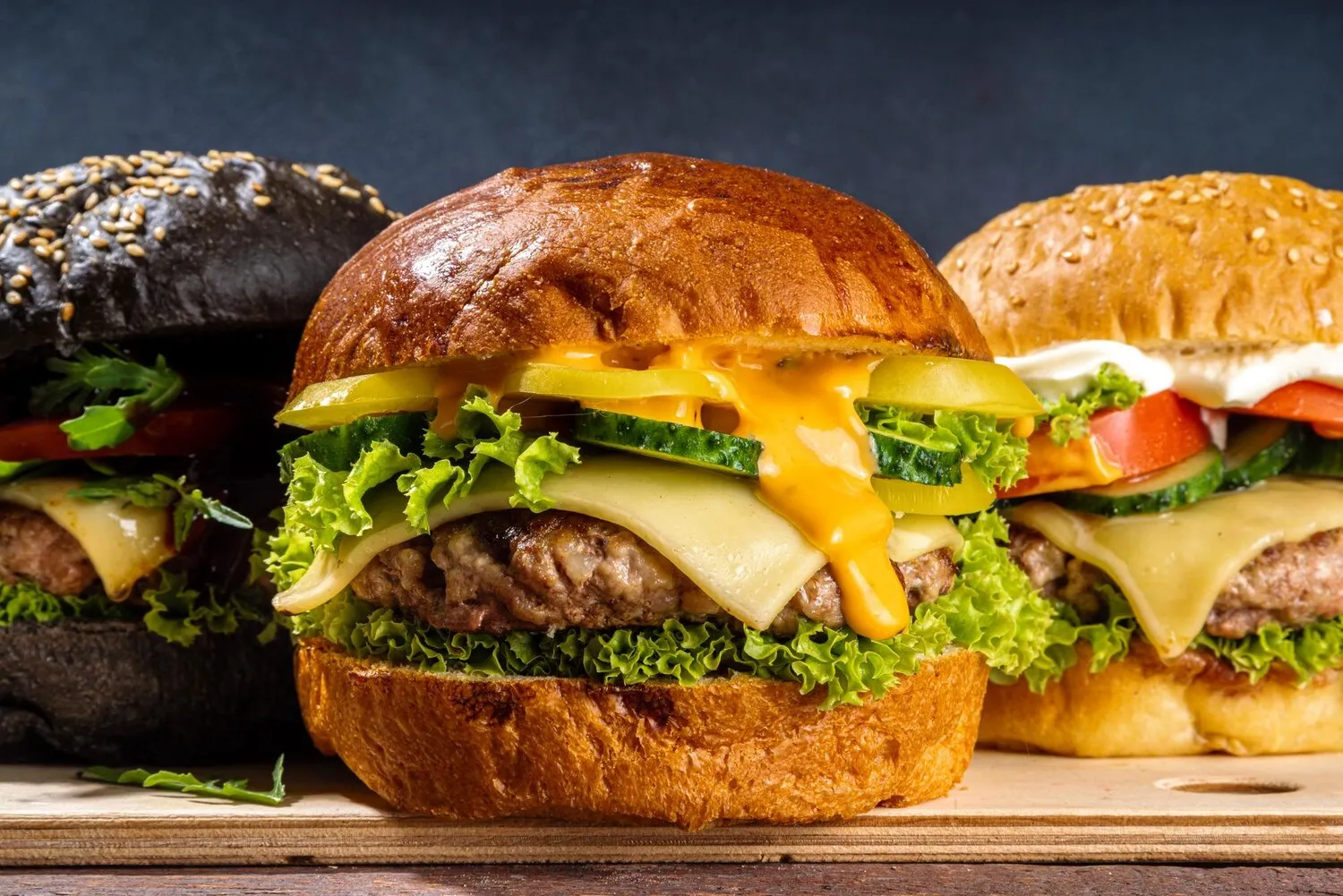
Burgers
Variety of Burgers.
Nutrition Facts
* The % Daily Value (DV) tells you how much a nutrient in a serving of food contributes to a daily diet. 2,000 calories a day is used for general nutrition advice.
La Grand Poste
The burger's origins are debated, but it generally evolved from the German Hamburg steak, brought to the US by European immigrants. Early versions were simply ground beef patties served between slices of bread. The exact inventor of the modern burger is disputed, with various claims from the late 19th and early 20th centuries.
Burgers are deeply embedded in American culture, representing convenience, casual dining, and customization. They are a staple at fast-food restaurants, diners, and backyard barbecues.
Fast Food Icon
Burgers are synonymous with fast food culture in the US, influencing global fast-food chains and making them a readily accessible and affordable meal option.
Barbecue Staple
Burgers are a central part of American barbecue culture, often cooked outdoors and enjoyed at gatherings with family and friends.
Customization and Personalization
The burger is a highly customizable dish, allowing individuals to tailor the ingredients and toppings to their personal preferences.
Regional Variations
Different regions of the US have their own unique takes on the burger, such as the Juicy Lucy in Minnesota (cheese-filled patty) or the Oklahoma onion burger (onions smashed into the patty).
Burgers offer a wide spectrum of flavors, depending on the ingredients and preparation methods. Umami from the beef is central, enhanced by savory, sweet, tangy, and spicy elements.
The primary flavor comes from the beef patty itself, which can be seasoned with salt, pepper, garlic powder, onion powder, and other spices. The toppings contribute significantly: cheese adds richness and saltiness (cheddar, American, Swiss, etc.). Vegetables like lettuce, tomato, onion, and pickles provide freshness, acidity, and crunch. Condiments like ketchup, mustard, mayonnaise, and various sauces introduce sweetness, tang, spice, and creaminess. Buns contribute texture and subtle sweetness. Bacon, mushrooms, and other additions provide further complexity.
Beef Blend Selection
Choose a ground beef blend with a good fat content (around 80/20) for optimal flavor and juiciness. A mix of different cuts, like chuck and sirloin, can also enhance the flavor.
Patty Shaping
Gently form patties without overworking the meat. Create a slight indentation in the center to prevent them from bulging during cooking. Keep the patties cold until ready to cook.
Cooking Method and Temperature
Grill, pan-fry, or smash-burger techniques each yield different textures. Use high heat for searing and a medium temperature for even cooking. Use a meat thermometer to ensure the patty reaches a safe internal temperature (160°F/71°C for ground beef).
Bun Selection and Toasting
Choose a sturdy bun that can hold the patty and toppings without falling apart. Toasting the bun adds texture and prevents it from becoming soggy.
Layering
Layer your burger carefully, start with the sauce on the bottom bun, then add the patty, cheese, and your vegetables, and finally the top bun.
Explore additional Burgers dishes and restaurants
Explore BurgersDiscover top dining spots and culinary experiences in Liège.
Explore LiègeLearn more about the food culture, restaurant scene, and culinary heritage of Belgium.
Explore Belgium